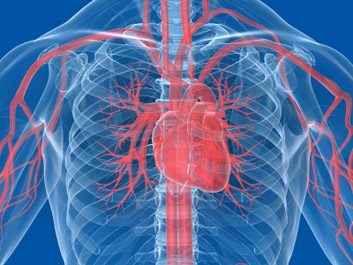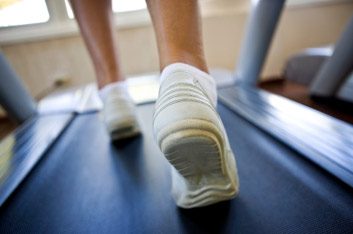
Get fit quick
There are no quick fixes in the world of fitness, and sometimes our hectic lives can keep us away from our regular exercise routine. The bad news? That desk-bound sedentary lifestyle can lead to weight gain, illness and life-threatening disease. The good news? Research suggests that only a few short bursts of intense exercise per week can help you lower your risk of developing diseases like type 2 diabetes and heart disease and keep your health on track.

Type 2 diabetes: The bad news
According to the Canadian Diabetes Association, more than two million Canadians have type 2 diabetes, and according to Health Canada, tens of thousands of new cases are reported every year. And type 2 diabetes is strongly linked to lifestyle factors such as obesity, poor eating and a sedentary lifestyle. (Find out more in our background article on type 2 diabetes.)

Type 2 diabetes: The good news
One study at Scotland’s Heriot-Watt University showed that intense bursts of exercise-totalling 6 to 7 minutes per week-can regulate insulin and reduce the risk of type 2 diabetes risk factors in persons under age 40.
Try this: At maximum effort, pedal a stationary bike or run up stairs for 30 seconds. Rest four minutes, then repeat 3 to 5 more times, three times per week. Out of shape? Start with doing two repeats twice a week, then build up from there, recommends James Timmons, one of the study’s authors and professor of lifestyle diseases at the University of London.

Cardiovascular disease: The bad news
Although rates have declined over 70% since 1956, cardiovascular disease is still the leading cause of death among Canadians. According to the Heart and Stroke Foundation of Canada, someone dies every seven minutes from heart disease or stroke, with physical inactivity ranking as one of the top contributing risk factors.

Cardiovascular disease: The good news
“Short, intense bursts of intermittent exercise are a time-efficient strategy to induce many benefits usually associated with more prolonged periods of moderate intensity training,” says McMaster University kinesiology professor Martin Gibala-in other words, short, high-intensity workouts can help keep your heart healthy. In one Norwegian study, aerobic intervals even helped elderly heart failure patients reverse their heart damage.
Try this: Walk or run for 3 minutes at 90% of your maximum heart rate followed by 3 minutes rest. Repeat four times. Do this three times per week to help reduce your disease risk.

Obesity: The bad news
Almost one-quarter of Canadians are obese, with a body mass index of 30 or higher, according to the 2004 Canadian Community Health Survey. That’s nearly double the percentage of obese individuals only 30 years ago. People who are overweight or obese are at significantly higher risk for type 2 diabetes, cardiovascular disease, high blood pressure, gallbladder disease, osteoarthritis and certain types of cancer.

Obesity: The good news
Taking frequent “breaks” from inactivity can help you prevent obesity. Australian researchers found that people who take frequent breaks lasting one minute or more have smaller waist circumferences, independent of their regular exercise routines. “You should aim at performing movements which utilize large muscle groups and get your heart rate up just a tad, like getting out of your chair at work to walk to the washroom, fill up your bottle of water, or chat with a co-worker,” says Peter Janiszewski, exercise physiologist at Queen’s University in Ontario.
Related:
• 7 ways to maximize your workout
• Walk your way slim
• Lose weight the healthy way
